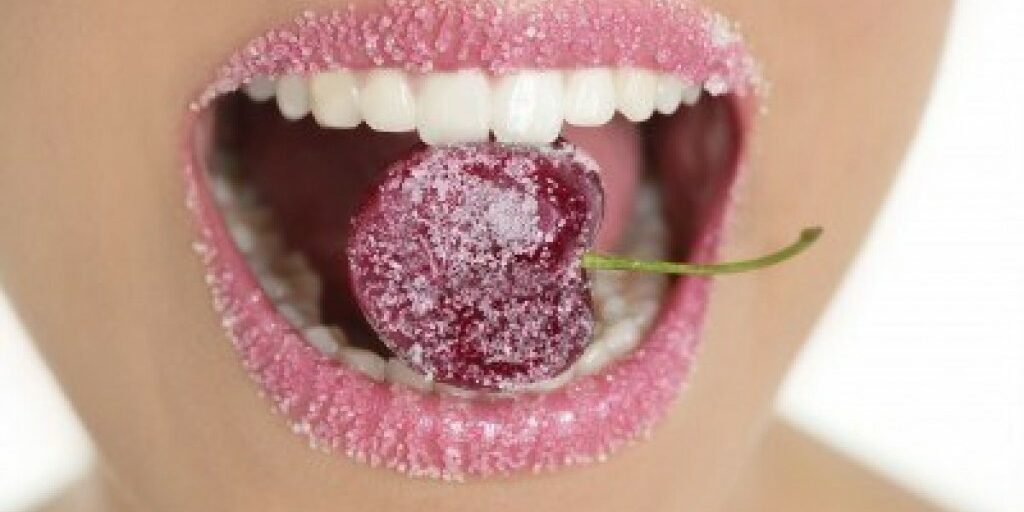If there is one food that is not your BFF, and that food (if we can even call it that) is sugar. There isn’t a man or woman alive who doesn’t feel 200% better when they give up refined sugar. Why? The first reason is that you get a high and then an unpleaseant crash. You’ve likely heard of a “sugar high” right? This is what happens: After you’ve downed that Double Chocolate Chip Frapp and slice of coffee cake, your pancreas goes into overdrive. Insulin is sent to the rescue to get the sugar out of your bloodstream asap and to deliver it to where its needed for extra energy. But if you’re not running a marathon or chasing a bear, it’s unlikely that you’re going to need all this extra energy – what happens to it? It’s stored as fat. So far, NOT so good – but to compound this situation, adrenalin and cortisol are secreted to aid this process, and these hormones give you a sudden high…and then an even more sudden low. That’s why you might crash mid-morning after your coffee shop snackettes, and feel like you need a serious shot of caffeine.
Are all sugars created equal? Absolutely not! Some sugars such as refined table sugar and high fructose corn syrup are empty calories, meaning that they don’t contain one single healthy nutrient. On the other hand sugars such as raw honey, molasses, maple syrup, and date syrup contain vitamins, minerals and important enzymes. However, I cannot state more strongly that these healthier versions are still sugars, which means that many of them still have glycemic index. Just to remind you, the Glycemic Index of a food refers to how fast its carbs and sugars will spike your blood sugar. For example a sweet potato has a lower GI. than a regular potato. The GI index runs for zero to 100, so you can see from the sugars listed below that Brown Rice Syrup and Raw Honey have a much lower GI index than white or brown sugar.
Glucose 96
Fructose 22
Lactose 46
Sucrose (white sugar) 80
Brown sugar 64
Barley malt syrup 42
Brown rice syrup 25
Raw honey 30
Agave syrup 15
High fructose corn syrup 62
Stevia less than 1
Sugar cane juice 43
Evaporated cane juice 55
Maple syrup 54
Black strap molasses 55
Monk Fruit less than 1
Xylitol and Erythritl less than 1
You may have heard of the term “Glycemic Load”, which takes into account the glycemic index of a food multiplied by the carbohydrate content of the food. For most foods, the rule follows that a food with a high glycemic index will also have a high glycemic load. However, there are exceptions to the rule; carrots and watermelon have high glycemic index but a low glycemic load, due to the small amounts of carbohydrate found in these foods.
Since I gave up eating refined sugar, I’ve become much more sensitive to sugar in a good way: Sweet fruits taste REALLY sweet, and a small amount of natural sugar completely satisfies my taste buds. If you are addicted to sugar, try going cold-turkey for 2 weeks, which means giving up as much sugar (even the healthier ones) that you can. You need to become really good at label-reading for this project because many healthy-looking breads and cereals can be loaded with the stuff. Remember that there are 50 different terms for sugar on an ingredient label including High Fructose Corn Syrup and Dehydrated Cane Juice). Once 2 weeks has passed, I promise that you will lose the cravings, and when you go back to allowing yourself a little honey or maple syrup, it will seem VERY sweet.
Beware of artificial sweeteners because they really mess with your taste buds. Because they are off-the-charts sweet, your taste buds don’t ever get the chance to re-set to what is natural (as in the sweetness of an apple, or a banana). The same goes for too much Stevia, Xylitol or Erythritol, although I MUCH prefer these natural sweeteners to their synthetic counterparts.
Oh, and by the way, since I am in the process of writing a book about beauty, it’s been playing on my mind (and is going down on the page,) about how sugar is prematurely aging. Sugar in your blood sticks to fats and proteins and creates Advanced Glycation End Products, which make the protein fibers in your skin (collagen and elastin) stiff and malformed. This process also makes the skin more vulnerable to UV light.
So, enough said – if you want a strong immune system, if you want plump and glowing skin, and if you want to have balanced blood sugar levels during the day – I recommend you dramatically cut down on your sugar intake. Look for labels that read “un-sweetened” or “no-added sugar”, and try to start to appreciate the intense sweetness of healthy organic fruits and veggies, instead of the junk that’s pumped into processed food to make it more palatable. Remember, when something like fat is removed from a food, it has to be replaced with something to make it taste okay, and that something is almost always sugar and sodium.
My favorite go-to “healthy sugar” is date puree.
Place 8 pitted dates in a saucepan with 1 1/2 cups water. Bring to a boil and then simmer for 15 minutes. Allow it to cool and place in a high speed blender, with 1 tsp vanilla extract. It will keep for up to 5 days in the fridge in a sealed container. I use it for baking breads, cakes, and cookies, and to top my morning yogurt or oatmeal. I also toss a tablespoon into my morning green smoothie.
If you enjoy my content, don’t forget to sign up for my free weekly-updates.




